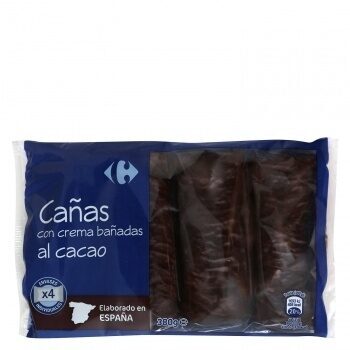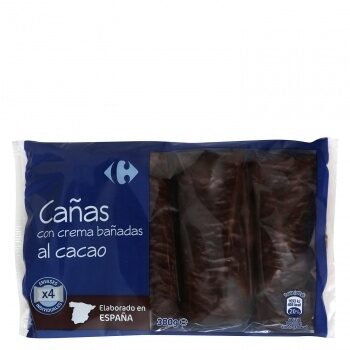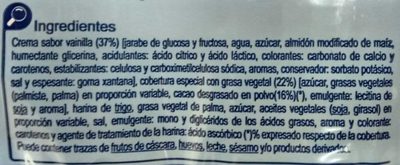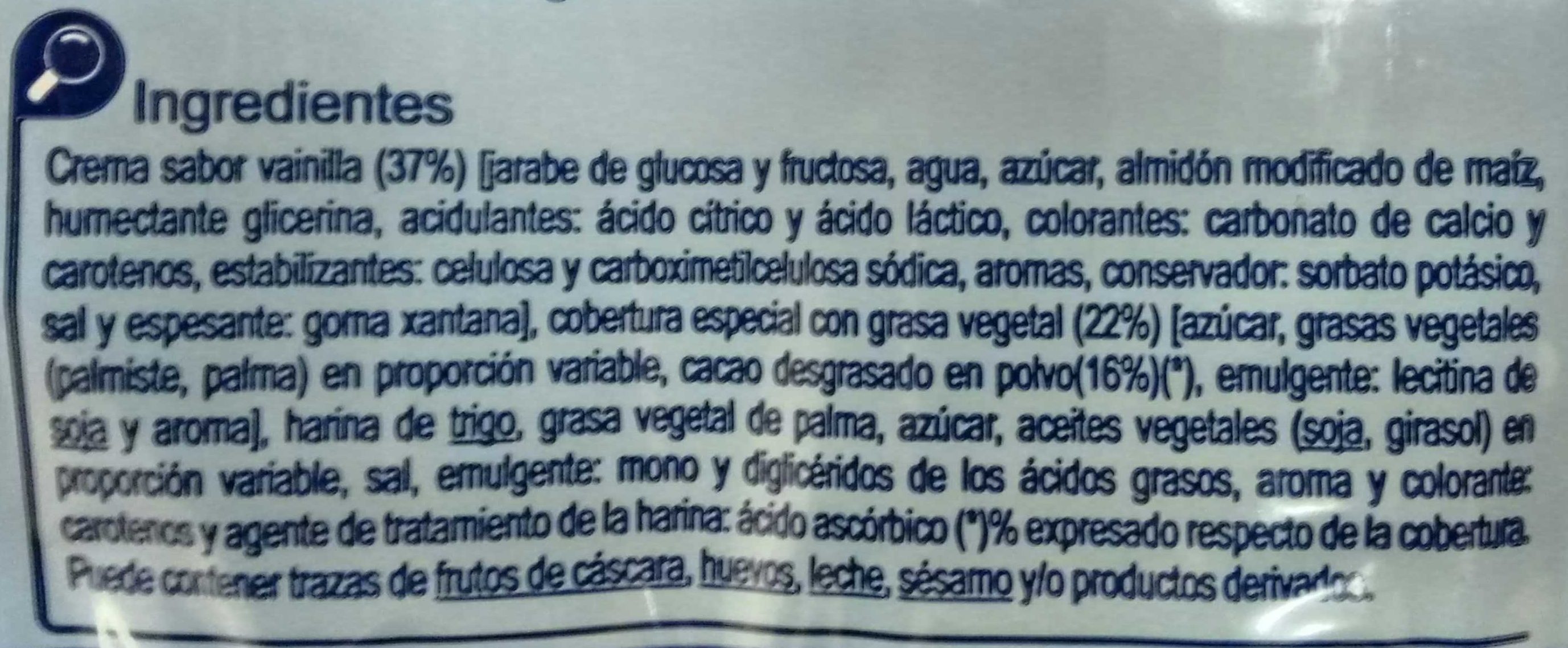Cañas crema-cacao - Carrefour - 380 g
This product page is not complete. You can help to complete it by editing it and adding more data from the photos we have, or by taking more photos using the app for Android or iPhone/iPad. Thank you!
×
Some of the data for this product has been provided directly by the manufacturer Carrefour España.
Barcode: 8431876261707 (EAN / EAN-13)
Common name: Producto de bollería con relleno de crema sabor vainilla y cobertura especial con grasa de cacao
Quantity: 380 g
Packaging: Plastic
Brands: Carrefour
Categories: Snacks, Sweet snacks, Biscuits and cakes, Pastries
Labels, certifications, awards:
Green Dot
Manufacturing or processing places: Spain
Link to the product page on the official site of the producer: https://www.carrefour.es/supermercado/de...
Stores: Carrefour
Countries where sold: Spain
Matching with your preferences
Environment
Packaging
Transportation
Threatened species
Report a problem
Data sources
Product added on by openfoodfacts-contributors
Last edit of product page on by inf.
Product page also edited by kiliweb, naruyoko, org-carrefour-espana, packbot, robot8a, thaialagata, yuka.YXBFT0xad0ZnTXNEaWNJVStUTCt4dHQzeDVTUVR6dTNJTmMySVE9PQ.










